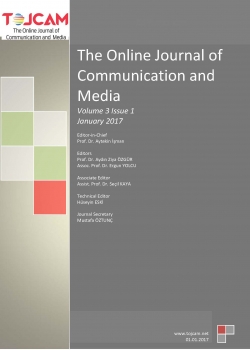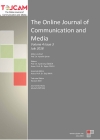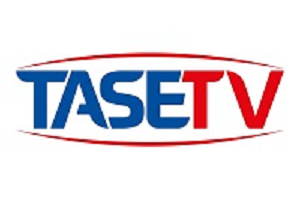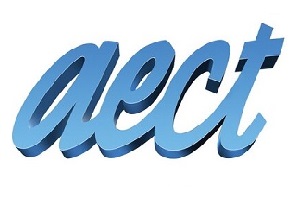TOJCAM - Volume 3 - Issue 1 - January 2017
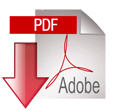 ARE OUR UNIVERSITIES READY FOR THE CHANGING WEB USER PROFILE IN EVERY ASPECT?
ARE OUR UNIVERSITIES READY FOR THE CHANGING WEB USER PROFILE IN EVERY ASPECT? Ă–zkan Canay
Abstract:
With the widespread use of the Internet and the proliferation of services offered over the Internet, the use
of the web is increasing day by day. In addition, as a result of computerization and smart phone usage in
recent years, young people who have been educated, and middle-aged and older people who use
computers at work places frequently use the Internet environment. The gradual increase in the computer
literacy rate is making a serious change in the current web user profile in Turkey. In this study, we
investigated the situation of this transformation in web usage in the recent years and some tendencies
towards the future are examined by going through various published statistics. Besides, the role of the
universities in Turkey on this transformation and effect of this transformation on the universities has been
interpreted.
 DESIGN, DIDACTIC, SCENARIES OF CONSUME
DESIGN, DIDACTIC, SCENARIES OF CONSUME Marco Elia
Abstract:
The world is living in a situation at the edge of normality.
In line to an entropy transformation, design has got bogged to the edge of a process evanescence of the
discipline, which informative grade was reduced to public messages that exalt each typology of trash that could
be sold in commerce. The meaning of design has been deeply rooted in our culture so that it cannot be perceived
anymore. We produce million of objects that satisfy our whishes and that generate needs. Such a big amount of
things that evolves itself (Gold). An accelerated creative process that is destinated to implode on his own due to
the effect of an already established aesthetic obsolescence that escapes to each rule of taste, including it in the
concept of luxury what should be necessity.
It’s design on demand, where everyone is able to elaborate customized objects; a software program will check
the production process; technology will help to use tridimensional printers. The step from design to production
is faster. The result: it’s a babel of mass-media products (Codeluppi), of concept-objects describing a turbulent,
invisible trajectory that embraces each thought-action, weak, changeable, local or universal. Symbolic objects,
sensitive to the transformation of taste, for which it follows “the logic of abstraction of fluxes, [reducing the
product to] a brand puts on the top of the other like a luminous writing to the mountains of product” (La Cecla).
A planetary garbage Rem Koolhaas defines Junkspace. The result is a kind of visual pollution on big scale, that
feeds on a supermagic design.
To adhere to a total aesthetic idea of the environment seems the last edge of a discipline seemingly without
connotation, tending to a touchable material evanescence choosing to substitute the relation between shapefunction
with the binomy shape-sense. Nowadays design is conceived as structural aspect in the evolving project
of the whole production sectors. It’s business culture, capital of company (Bonsiepe).
Today the contemporary culture proposes the figure of the prosumer, that is the cosumer-producer able to
suggest business strategies systems of products oriented to the mass customization of the manufacts (Dorfles).
To reach semplicity in design is a must. The good design doesn’t originate from an order, but from a series of
questions.
To develop ideas and realize products requires a rigour of project and ethic behavior that goes beyond the
commercial slogan that pass polluting products off for design. This rigour and ethic imposes to designers,
engaged to be freelance teachers, to rethink the creative act as the responsible action that tends to slow down
simple illusion disadvantaging to think of the consequencies that a unihinibited planning produces on the
determined physical environment and on human behaviors.
 THE EFFECTS OF BAUHAUS PHOTOGRAPHY ON THE THIRD REICH
THE EFFECTS OF BAUHAUS PHOTOGRAPHY ON THE THIRD REICH Evrim Kabukcu
Abstract:
The Bauhaus was established in Weimar Republic after World War I; and it emphasizes reconstruction
of ruined values and hopes after the war. The school, having the slogan ‘combining art and technology by
starting from a scratch’, stresses the research and creation process in radical experimental studies on
photography, and has played an important role in the evolution of photography.
The Bauhaus aimed at reconstructing visual environment; and camera was an ideal medium for Bauhaus
because of its characteristic of producing technological image by combining art and technology. The school
structured its experimental studies on the researches of new educated photographers; it erased the past of the
perception, which was far from research and innovations, of photography, which was based, up to that time, on
established ‘modern’, individual inspiration, and it initiated the efforts of reconstruction. Photography was
reunited with new styles of observation, affluence of expression, and new techniques, which are still in use
today, by the help of experimental studies at the Bauhaus being conducted within this framework.
Adolph Hitler’s appointment as German Chancellor in 1933 signalled the end of the Weimar
Constitution and the Bauhaus. The aim of the National Socialists was to be able to ensure the prosperity of the
German nation by eliminating all the factors that could confuse the superior German nation’s mind.
This paper argues whether the techniques developed as results of the experimental photography
researches conducted at the Bauhaus, were effective on the advertising photographs published during the Third
Reich.
It is claimed that the techniques developed at the Bauhaus, founded in Weimar Republic, as results of
the experimental photography researches were applied in the advertisements, which were parts of life reshaped
as a result of the efforts for nazification of art, culture and advertising sector by National Socialists during the
Third Reich, despite the fact that Bauhaus was closed in 1933 by being described as a bolschevic institution.
 UNIVERSITY STUDENTS OF ANXIETY REGARDING FUTURE TECHNOLOGIES
UNIVERSITY STUDENTS OF ANXIETY REGARDING FUTURE TECHNOLOGIES Metin ÇENGEL, Ayşe ALKAN
Abstract:
The aim of this study was to identify the concerns of the university's students and future technologies it is to
detect changes in anxiety after the training given to these students. Research in the 2016/2017 academic year,
Computer and Instructional Technology at Sakarya University Education, Sociology and Turkish language
studying in the Literature section was carried out with 100 students.A questionnaire developed by the researchers
to collect data in this study. In a survey carried out by scanning the model it is applied to pretest students. SPSS
16 software was used to analyze the data obtained by post test administered after the training on the subject.The
analysis of the data, frequency, one-way analysis of variance (ANOVA) was applied and the level of
significance. 05 As has been adopted. According to the department where they have students in the survey
results showed that the differences in pretest-posttest.

